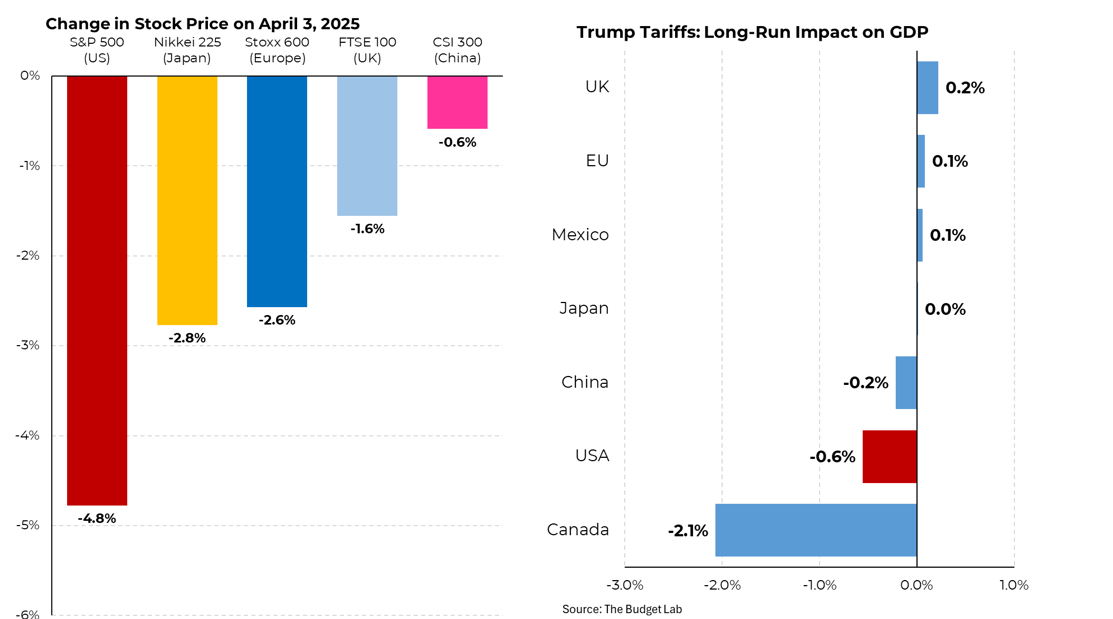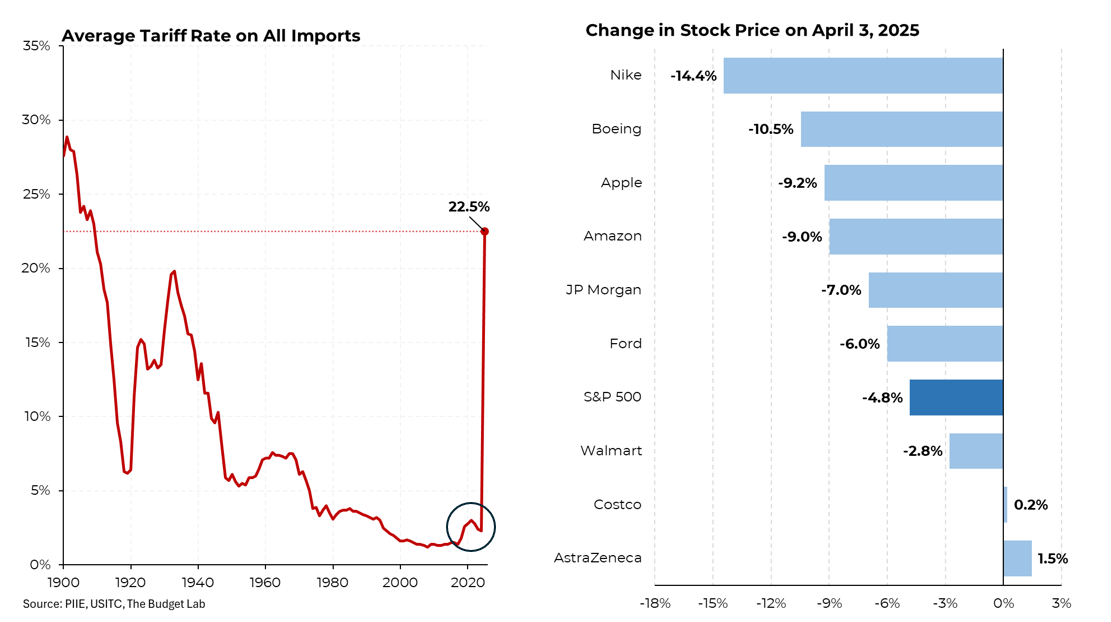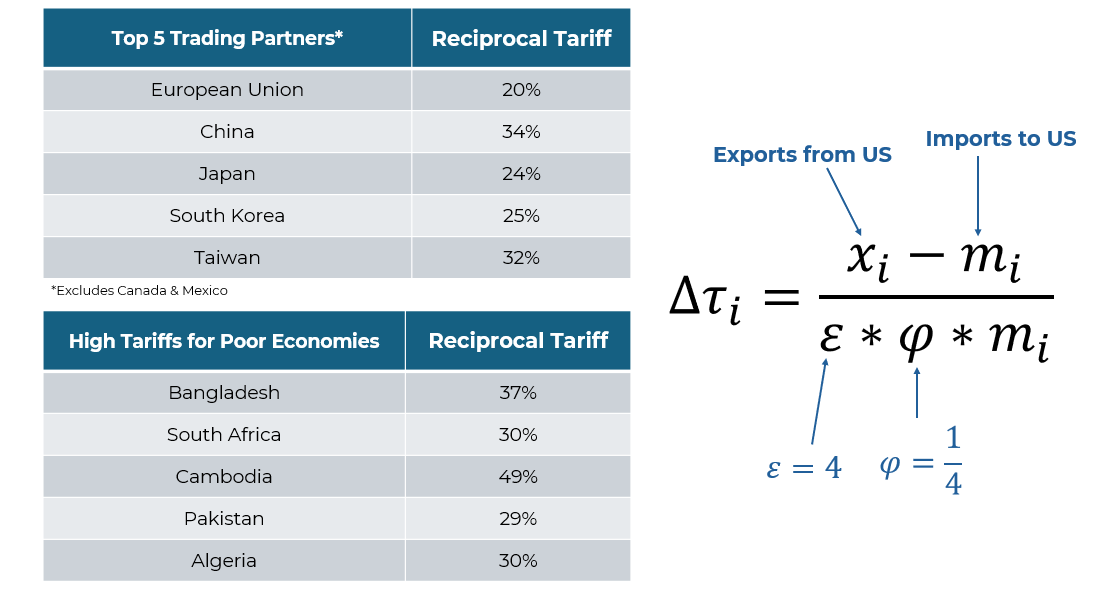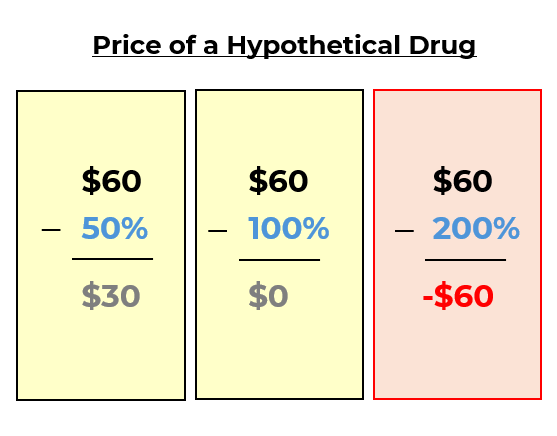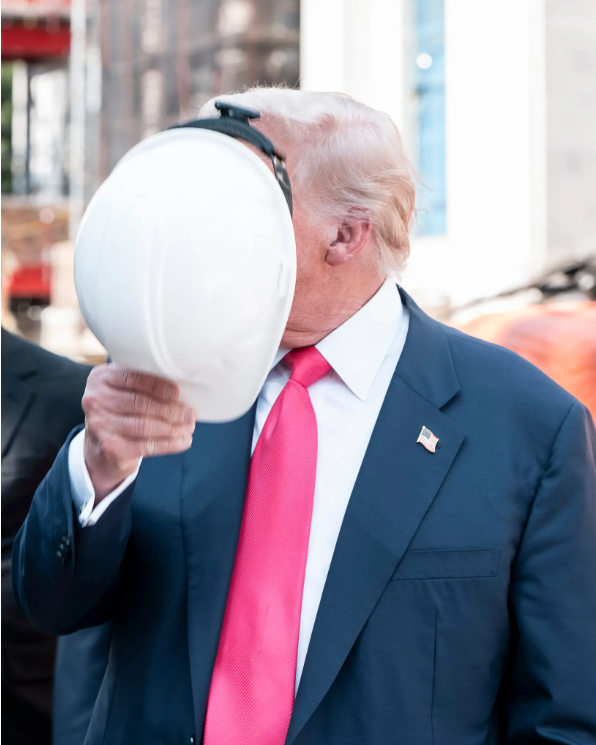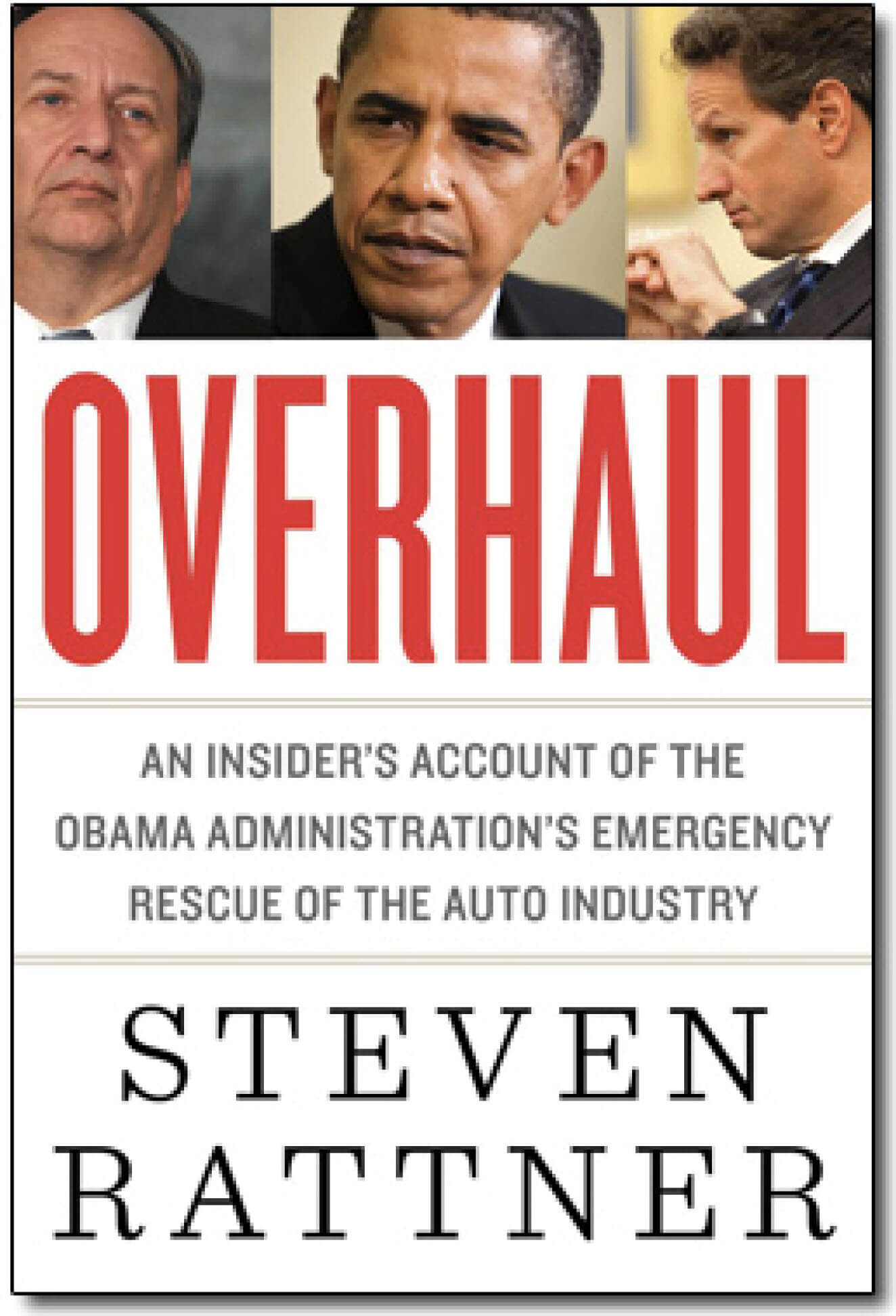The U.S. stock market reeled on Thursday in the wake of President Donald Trump’s unprecedented new tariffs on more than 60 countries around the world. Economists and investors spent the day trying to figure out what the impact of Trump’s plan is likely to be. While much uncertainty remains, the clear conclusion is that this will not be good for inflation, growth and general prosperity.
All told, more than $3 trillion of wealth evaporated in the U.S. market meltdown, the biggest drop since Covid hit in March 2020. Interestingly, the huge decline in the U.S. market was not met by equally large declines in other stock markets. In Japan, the Nikkei fell by 2.8%, European markets dropped by 2.6%, the British market declined by 1.6% and China’s shares barely fell at all.
Why was that? In part, because, ironically, economists believe that the Trump tariffs will hurt the U.S. more than any major economy except for Canada. These countries end up ahead because they get hit with relatively lower tariffs than many of the others. So in the long-run, which is the time frame of the estimates, more output/production shifts to those countries, making their economies bigger. (Canada is hurt the worst because their biggest export to the U.S. is oil, which is subject to the Trump tariffs.)
Putting the Trump tariffs in historical perspective is breathtaking. In just a few short weeks, Trump has brought the average tariff rate on imports into the U.S. from just over 2% to 22.5%, the highest since 1909. That puts them above the 1930 level, after the passage of the famous Smoot-Hawley tariffs, which didn’t cause the Great Depression but made it worse. Note the very small increase in tariffs under Trump 1.0 and the partial reversal during the Joe Biden administration.
While the stock market carnage was almost universal, the magnitude differed from company to company. Around 95% of Nike’s products, for example, are made in Vietnam, Indonesia and China and will now be subjected to particularly high tariffs. Boeing is a huge exporter of planes and likely to face retaliation from its global customers. Apple has many of its electronics made in China, which now faces a 54% tariff rate. And so on. Why were Walmart and Costco almost unscathed? Because analysts believe that with their huge buying power, they will be able to force suppliers to assume part of the burden and then they will be able to offer comparatively lower prices and take market share from other retailers.
Many of the new tariff levels are truly extraordinary. Our top trading partners will all be subject to tariffs of at least 20% and as much as 54% in the case of China (as the new tariffs of 34% will come on top of a 20% tariff that Trump imposed earlier this year). And all imports will be subject to a tariff of at least 10%. Even more troubling is that Trump is imposing particularly high tariffs on an array of very poor countries. These will do huge harm to the economies of those countries.
How did Trump arrive at these seemingly random numbers? According to the White House, by using an impressive looking formula (including Greek letters like epsilon and phi). But that formula would not earn a passing grade in even the most basic economics class. It is basically gibberish.
